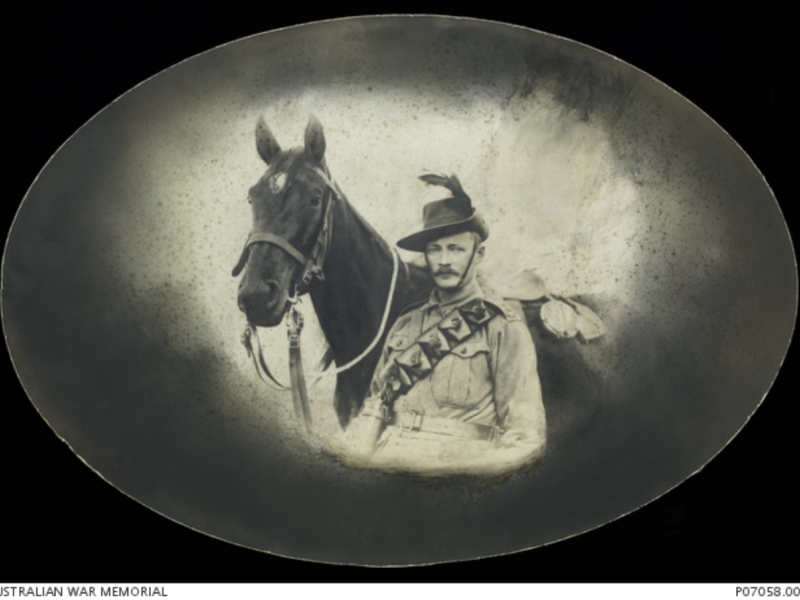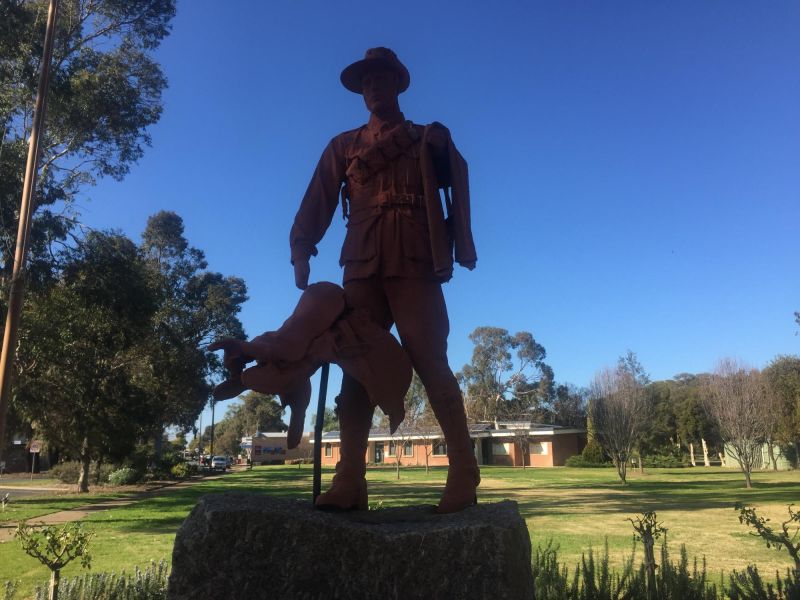Lieutenant Frank Raymond Massie, 12th Light Horse Regiment, AIF
Frank Massie was born in 1885 in Lilydale, Victoria, to Frank and Mary Massie, the second of eight children.
In 1907, he married Jean Rebecca Johnstone, and they had a son, Frank Henry Massie. In 1914, Massie was a station manager on the property “Ytham”, at Illabo, New South Wales.
He enlisted for service with the Light Horse Reserve at Holsworthy Camp in November 1914, transferring to the 12th Light Horse Regiment in March 1915. He was promoted from trooper to squadron quartermaster sergeant.
He embarked from Sydney in June for Egypt. They trained and patrolled in the Suez Canal Zone, until August.
After the heavy casualties of the August Offensive, the 4th Light Horse Brigade, including the 12th Light Horse Regiment, was sent to Gallipoli as reinforcements.
Massie and his squadron were transferred to the 7th Light Horse Regiment, carrying out defensive duties for the remainder of the campaign.
They then returned to Egypt for the Sinai–Palestine campaign in April 1916.
On 1 January 1917, Massie was commissioned with the rank of second lieutenant and sent to studies on instructional and topographical courses.
On 8 March, while he was away from the field, his brother Lieutenant Hugh Massie died as a German prisoner.
After Massie’s return, the Egyptian Expeditionary Force again went on the offensive with an attack on Beersheba on 31 October. Late in the day, with the situation deteriorating, the 4th Light Horse Regiment and 12th Light Horse Regiment, including Massie, attacked Beersheba at the gallop and captured the town.
In the days following the action, Massie, a meticulous recorder of events and detail in the regimental war diary, produced a sketch map of the Australian formations as they were formed for the attack on the town. Massie’s work was noticed, and he was seconded to the 4th Light Horse Brigade’s Headquarters in February 1918.
On 1 May, Massie was instrumental in organising and leading elements of the 4th Light Horse Brigade as they withdrew from positions near Es–Salt. Often under heavy fire, he was able to commit troops to the places they were most needed, helping the brigade to withdraw in good order. Shortly afterwards, his name was promulgated in Sir Edmund Allenby’s despatches for bravery and leadership during the action.
By the end of May, the 4th Light Horse Brigade was in defensive positions at Musallabeh. With soaring temperatures and an infestation of flies, scorpions, spiders, and snakes, many men became ill, including Massie. He returned to headquarters and in August, was sent to a rest camp for a week.
Throughout early September, the 4th Light Horse Brigade was in constant motion. On 1 October they entered Damascus.
Massie told his batman he was not feeling well and took himself to hospital. He was suffering malignant tertian malaria, and soon developed pneumonia.
Massie died on 15 October. He was laid to rest in the Damascus British War Cemetery the following day. He was 31 years old.
Michael Kelly, Historian, Military History Section
- Australian War Memorial https://www.awm.gov.au/collection/C1221972

 Australian War Memorial
Australian War Memorial